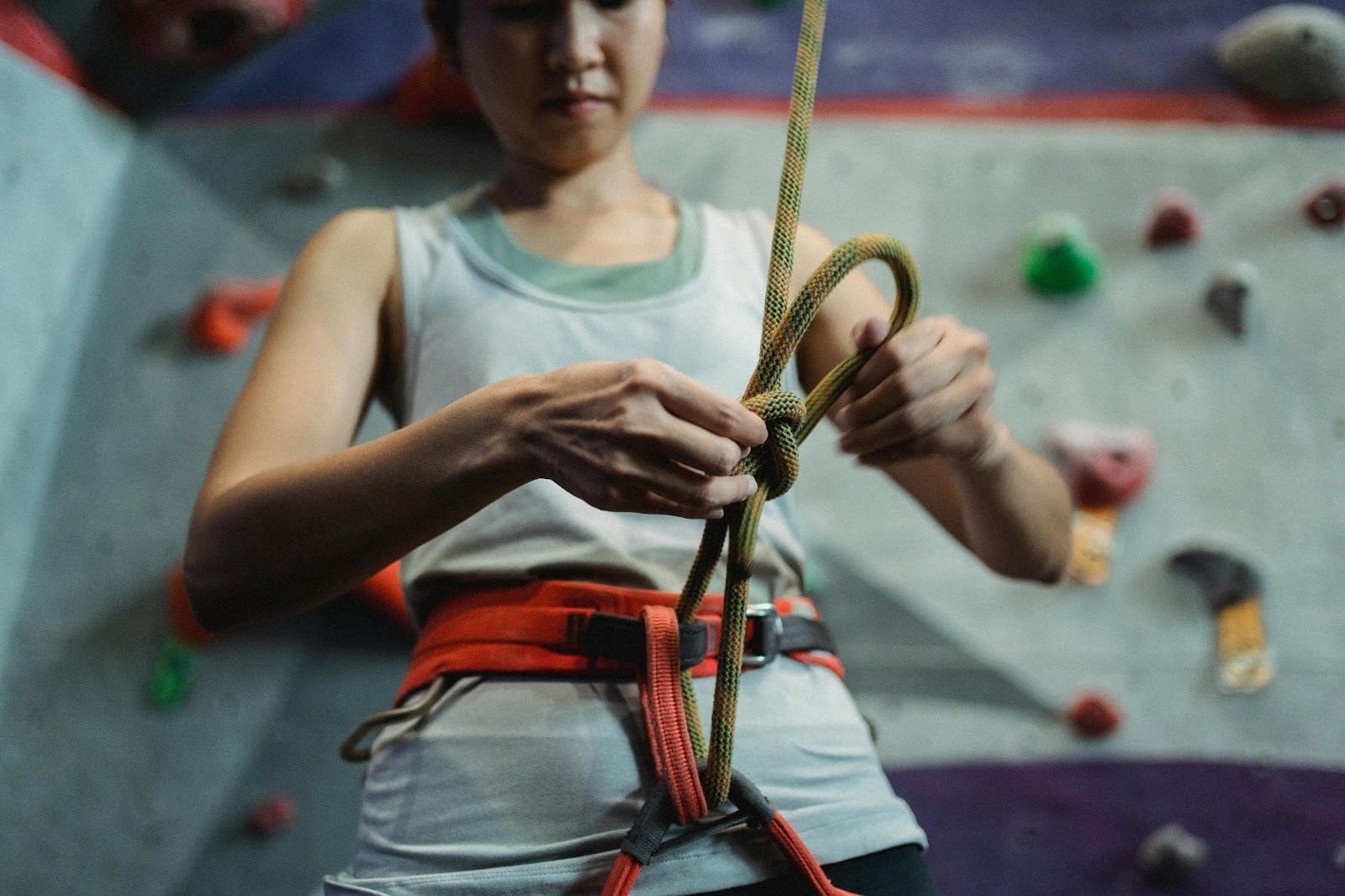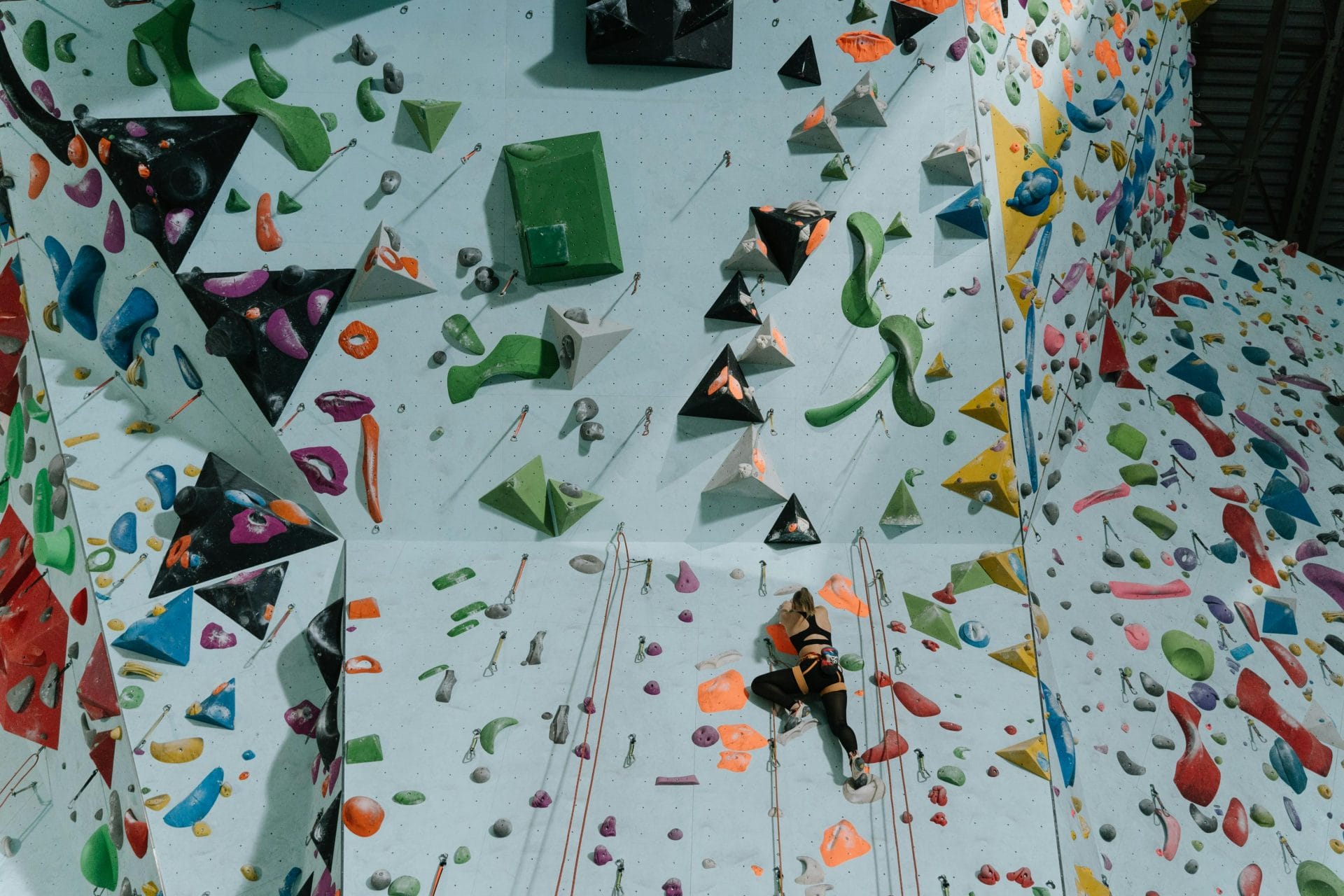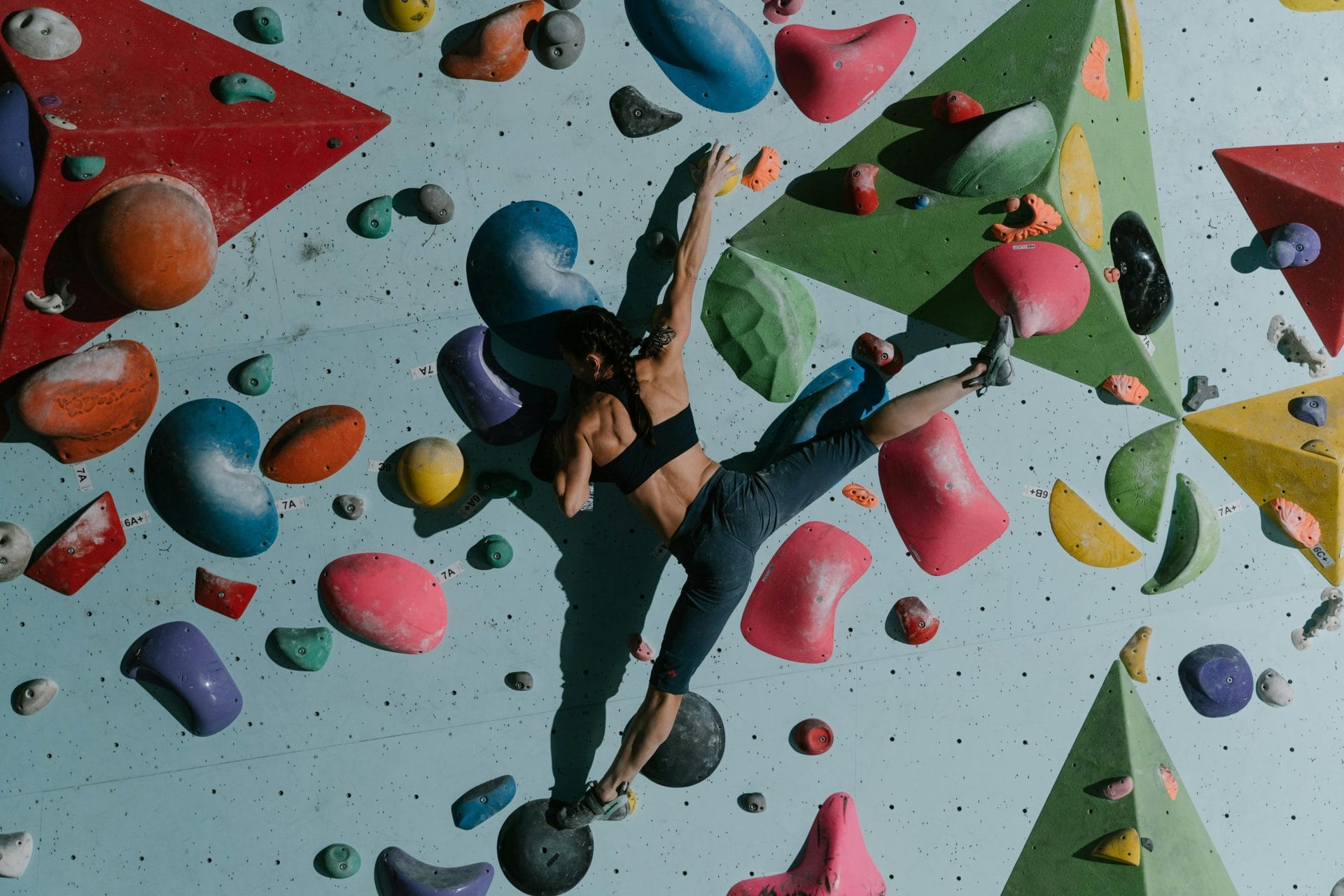Understanding climbing language is key for every climber—know your crux from your dyno, flash from send, and beta from pump to level up your game.
Climbing’s got its own language, a mix of grit and precision that binds climbers together. Words like belay (the rope system that keeps you safe), crimp (a tiny hold you grip with fingertips), and beta (tips for a route) aren’t just jargon—they’re lifelines. Climbers shout “Take!” when they need slack, or “On belay!” to signal readiness.
It’s a dance of trust and communication, where a single misheard word can mean the difference between safety and a fall. For beginners, learning these terms isn’t just helpful—it’s essential. So, keep reading. The wall’s waiting, and so’s the lingo.
Key Takeaway
- Climbing language promotes safety and communication among climbers.
- Key terms like “jug” and “crux” are essential for understanding climbing techniques.
- Familiarizing yourself with climbing jargon can enhance your climbing experience.
Climbing Terms You Need to Know
Stepping into the world of climbing can feel like walking into a conversation mid-sentence. Words fly around—some sound technical, others sound made up. But they all mean something. They help climbers communicate, stay safe, and move efficiently.
- Crimp: A tiny hold that demands fingertip strength. Often no deeper than a quarter-inch.
- Heel Hook: Using the back of the heel for support. Great for balance and pulling power.
- Toe Hook: Like a heel hook, but using the toes to stay stable or pull inward.
- Dyno: A jump to grab a distant hold. Requires timing, confidence, and commitment.
- Smear: Pressing the shoe against a blank surface for friction. No edges—just trust.
- Campusing: Climbing without feet. Pure upper-body power, often trained on a campus board.
- Beta: Information on how to complete a climb. Sometimes detailed, sometimes vague.
- Crux: The hardest part of a climb. Every route has one (or more).
Understanding these words makes climbing smoother. No second-guessing, no confusion—just clear communication and better movement.
Climbing Features: What to Grab Onto
Every climb is a puzzle, and holds are the pieces. They shape the way climbers move, rest, and problem-solve. Knowing what to grab—and how—can make all the difference.
- Hold: Any spot on the wall or rock that can be grabbed or stepped on. Some are friendly, some are brutal.
- Jug: A large, deep hold that allows for a full-handed grip. Great for resting.
- Sloper: A hold with no edges, just a rounded surface. Requires tension and open-hand strength.
- Volume: A large geometric shape on indoor walls. Can have holds attached or be used for balance.
- Pinch: A hold that requires squeezing with the thumb and fingers. The wider, the harder.
- Edge: A flat hold with a defined lip. Usually grabbed with fingertips.
- Gaston: A sideways push hold. Think of pulling open an elevator door.
Knowing these features changes how climbers approach problems. Instead of searching blindly, they recognize patterns, anticipate movements, and climb smarter.(1)
Route and Difficulty: Climbing Levels
Credits : Geek Climber
When climbers talk about routes, they often mention how tough a climb is. Each route can vary in difficulty, and understanding these terms can help climbers prepare for what they will face.
- Crux: The crux is the hardest part of the climb. It’s usually where you need to focus the most. If you can get past the crux, the rest might be easier. Did you know the crux actually determines the overall difficulty rating of a route? It’s like the make-or-break moment that defines how challenging a climb really is.
- Beta: This is the advice or tips on how to complete a climb. If you’re stuck, asking for beta can really help. Climbers love sharing beta with each other – it’s part of what makes the climbing community so supportive.
- Onsight: Climbing a route on your first try without falling is called an onsight. It’s a huge accomplishment!
- Redpoint: Completing a route after practicing, but without falling on your final ascent, is a redpoint. It shows how much you’ve improved.
Understanding these terms can help climbers set goals and track their progress.
Different Climbing Disciplines
Climbing isn’t just one thing; it has many styles. Each discipline has its own set of rules and equipment. Knowing about these styles can help a climber figure out what they enjoy most.
- Bouldering: This is climbing shorter walls without ropes. It’s often done close to the ground, so climbers use crash pads for safety when they fall.
- Lead Climbing: In this style, climbers clip into anchors as they go up. It’s important to know how to do this safely to avoid falls.
- Speed Climbing: This is all about racing to the top of a wall as fast as possible. It’s intense and super exciting, almost like a race against time!
What’s really cool is that climbing finally debuted as an Olympic sport in Tokyo 2020, featuring all three of these disciplines: lead climbing, bouldering, and speed climbing competitions. The inclusion in the Olympics has really helped bring climbing into the mainstream and introduce these different styles to a whole new audience.
Each climbing style offers something different. Finding the right discipline can make all the difference in a climber’s experience.(2)
Safety and Equipment: Staying Safe While Climbing

Credits: pexels.com (Photo by Allan Mas)
Safety is crucial in climbing, and understanding the equipment is just as important. Knowing how to use gear properly can prevent accidents and make climbing much more enjoyable.
- Belay: This means securing someone while they climb, managing the rope to prevent falls. It’s a vital skill for climbing partners.
- Carabiner: A metal clip that connects ropes and holds together. It’s a handy tool in any climber’s kit.
- Quickdraw: This piece of gear secures ropes to bolts on a route. It helps keep climbers safe as they ascend.
Every climber should be familiar with these tools. It’s reassuring to know you can rely on your partner when climbing high. Despite what many people think, indoor climbing is actually remarkably safe, with an injury rate of just 0.02 per 1,000 hours of climbing.
That’s much lower than many other popular sports! This safety record is partly because of good equipment and training, but also because the climbing community takes safety so seriously.
The Social Side of Climbing Language
Climbing is more than just a physical challenge; it’s also about community. Climbers come together from all walks of life, and they share a special language. Words like “crank” (pulling hard) and “pumped” (feeling tired in your arms) create a bond among climbers, no matter where they come from.
What’s fascinating is how climbing language evolves with the sport itself, reflecting new techniques and cultural shifts. Terms like “crux” and “crag” (an outdoor climbing area) have become widely used across the climbing world. This evolution shows how climbing culture is constantly growing and changing, just like the community itself.
This shared vocabulary makes it easier to connect with others in the climbing community. It’s a bit like having a secret handshake.
Practical Tips for Beginners
Walking into a climbing gym for the first time can feel overwhelming. People call out words that don’t seem to match what they’re doing. Someone yells “beta,” another talks about a “crux,” and suddenly climbing feels like learning a new language. But picking up the basics makes everything easier.
- Learn Basic Terms: Start small. Words like “belay,” “crux,” and “jug” are good first steps. Knowing these will help with communication.
- Watch Experienced Climbers: Observing others is a great way to learn. Body positioning, footwork—it’s all easier to understand when you see it in action. And asking for beta? Totally normal.
- Practice with Equipment: Handling carabiners, quickdraws, and belay devices early on makes them less intimidating later.
- Try Different Climbing Spots: Indoor gyms and outdoor crags each have their own feel. Experiencing both expands your understanding of climbing culture.
- Challenge Yourself: Ever heard of “eliminates”? Climbers sometimes skip specific holds to increase difficulty. It’s a fun way to improve technique while learning new terms in context.
Picking up climbing terminology isn’t just about sounding like a pro—it helps with safety, connection, and overall enjoyment. And it’s a full-body workout. Climbing can burn anywhere from 500 to 900 calories per hour, depending on intensity. Learning, improving, and staying fit—hard to argue with that combination.
FAQ
What’s the difference between lead climbing, top rope, and bouldering?
Lead climbing means clipping the rope into quickdraws as you go, while top rope has the rope already anchored above. Bouldering skips the rope entirely, focusing on short, powerful climbs over crash pads.
Why do climbers use a belay device like an ATC or gri-gri?
A belay device controls the rope, helping to catch falls and lower climbers safely. An ATC is a simple, manual option, while a gri-gri auto-locks for extra security.
What’s the purpose of a climbing harness, and how does the belay loop work?
A harness distributes weight during falls, and the belay loop connects the climber to a belay device, ensuring safe belaying and rappelling.
How do climbers use carabiners, and why are quickdraws important?
Carabiners connect gear and ropes, while quickdraws link the rope to bolts in sport climbing, reducing rope drag and keeping falls safer.
What’s the difference between static rope and dynamic rope?
Dynamic rope stretches to absorb falls and is used for lead climbing and top rope. Static rope doesn’t stretch, making it better for rappelling and aid climbing.
What are some common handhold and foothold techniques in gym climbing?
Edging uses the shoe’s edge, smearing relies on friction, and heel hooks and toe hooks help with balance. Handholds vary, from jugs to crimps.
How do climbers use route setting and beta to complete a project?
Route setting creates planned sequences, and beta is advice on how to climb them. A project is a climb someone repeatedly attempts before a send.
What techniques help with crack climbing and chimney climbing?
Crack jamming locks hands or feet in cracks for stability, while chimney climbing uses stemming and layback moves to climb wide vertical spaces.
What makes slab climbing different from overhang routes?
Slab climbing requires balance and slab technique, relying on precise footwork like smearing. Overhangs demand strength, with dynos and flagging to stay on.
How does protection gear differ in sport climbing and trad climbing?
Sport climbing uses pre-placed bolts, while trad climbing relies on a trad rack, placing gear like cams and nuts into cracks for safety.
What’s the difference between free soloing and aid climbing?
Free soloing means climbing without ropes or protection. Aid climbing relies on gear placements to assist upward movement, often on big walls.
Why do climbers use a figure-eight knot, prusik knot, or double fisherman’s knot?
A figure-eight knot ties into a harness, prusik knots help ascend ropes, and double fisherman’s knots securely join two ropes.
How does rope drag affect a multi-pitch route?
Rope drag makes it harder to pull rope through protection on long routes. Clipping in properly and using slings helps reduce drag.
What’s the importance of a belay stance in pitch climbing?
A solid belay stance keeps the belayer stable on multi-pitch routes, preventing falls while managing the rope at an anchor.
How do climbers train finger strength with a hangboard or campus board?
Hangboard training builds grip endurance, while campus board training develops explosive power for dynamic moves like dynos.
What’s the difference between onsight, flash climb, and redpoint?
Onsight means climbing without prior knowledge, a flash climb uses beta but is done on the first try, and redpoint means sending after practice.
Why do climbers use a chalk bag and climbing shoes?
A chalk bag keeps hands dry for grip, while climbing shoes provide precision and support for edging, smearing, and technical moves.
How do climbers avoid a barn door or pump out during a traverse?
Flagging helps prevent swinging off balance (barn door), while resting and good pacing help avoid pump out, which happens when forearms burn out.
Conclusion
Climbing’s language is its heartbeat, a rhythm of words that keeps climbers safe and connected. Terms like crux (the hardest part of a climb) and jug (a big, easy hold) aren’t just words—they’re tools. They help climbers share beta, trust their belayer, and push through tough routes.
For beginners, learning this lingo isn’t just about fitting in; it’s about climbing smarter, safer, and with more confidence. So next time you’re on the wall, shout “Take!” or “Clipping!”—own the language, and the climb feels a little more like home. Keep going.
Related Articles
- https://boulderingonline.com/beginner-terms/
- https://boulderingonline.com/basic-climbing-words/
- https://boulderingonline.com/bouldering-grip-terminology/
References
- https://www.rei.com/learn/expert-advice/climbing-holds.html
- https://www.devilslakeclimbingguides.com/blog/climbing-disciplines-explained?srsltid=AfmBOoq8XwDWxA8nzi0mlYacVUDDpTEZefcCYvz7bx4C-HWljns6qoQ_






